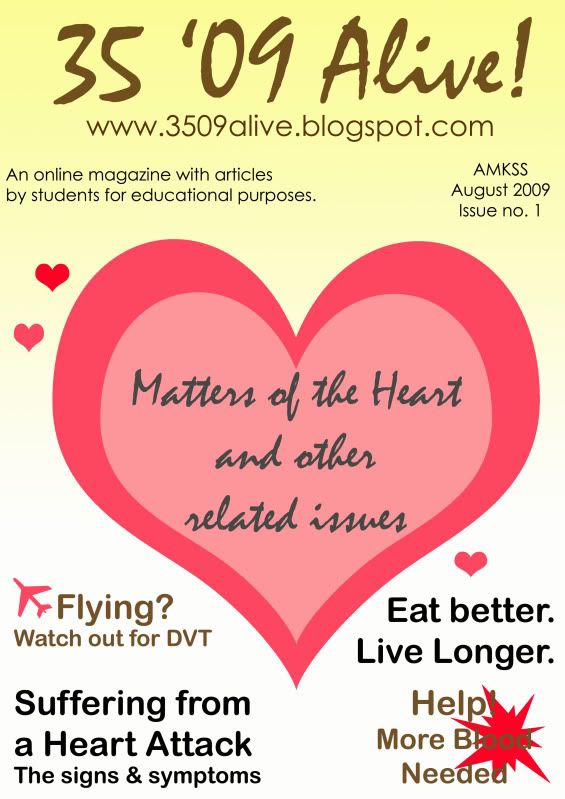WHAT CAUSES A HEART ATTACK?
Most heart attacks occur as a result of coronary artery disease (CAD). CAD is the buildup over time of a material called plaque on the inner walls of the coronary arteries. Eventually, a section of plaque can break open, causing a blood clot to form at the site. A heart attack occurs if the clot becomes large enough to cut off most or all of the blood flow through the artery.
 The illustration shows a normal artery with normal blood flow (figure A) and an artery containing plaque buildup (figure B).
The illustration shows a normal artery with normal blood flow (figure A) and an artery containing plaque buildup (figure B).The blocked blood flow prevents oxygen-rich blood from reaching the part of the heart muscle fed by the artery. The lack of oxygen damages the heart muscle. If the blockage isn’t treated quickly, the damaged heart muscle begins to die.
Heart attack also can occur due to problems with the very small, microscopic blood vessels of the heart. This condition is called microvascular disease. It’s believed to be more common in women than in men.
Another less common cause of heart attack is a severe spasm (tightening) of a coronary artery that cuts off blood flow through the artery. These spasms can occur in coronary arteries that don’t have CAD. It’s not always clear what causes a coronary artery spasm, but sometimes it can be related to:
- Taking certain drugs, such as cocaine
- Emotional stress or pain
- Exposure to extreme cold
- Cigarette smoking
What other risk factors those increase the chance of getting a heart attack?
1) Smoking
2) Family history of heart disease at a young age
3) High Blood Pressure
4) Elevated cholesterol levels
5) Lack of physical exercise
6) Diabetes
7) Microvascular disease (Very small blood vessels – Common in Women)
WHO IS MOST AT RISK IN GETTING A HEART ATTACK?
Inherited (genetic) factors?
- Persons with inherited hypertension (high blood pressure)
- Persons with inherited low levels of HDL (high-density lipoproteins), triglycerides, or high levels of LDL (low-density lipoprotein) blood cholesterol
- Persons with a family history of heart disease (especially with onset before age 55)
aging men and women
-Persons with type 1 diabetes
- Women, after the onset of menopause (generally, men are at risk at an earlier age than women, but after the onset of menopause, women are equally at risk)
Acquired risk factors?
- Persons with acquired hypertension (high blood pressure)
- Persons with acquired low levels of HDL (high-density lipoproteins), triglycerides, or high levels of LDL (low-density lipoprotein) blood cholesterol
- Cigarette smokers
- People who are under a lot of stress
- People who drink too much alcohol
- Individuals who lead a sedentary lifestyle
- Persons overweight by 30 percent or more
- Persons who eat a diet high in saturated fat
- Persons with Type II diabetes
WHAT TO DO IF SOMEONE SUFFERS A HEART ATTACK AT HOME?
Call 995
The first step to take when a heart attack happens is to call 995. Call whether you're sure you're having a heart attack or not.
Anyone showing heart attack warning signs needs to receive medical treatment right away.
Don't wait more than a few minutes — 5 minutes at most — to call 995
Calling 995 for an ambulance is the best way to get to the hospital because:
1) Emergency medical personnel (also called EMS, for emergency medical services) can begin treatment immediately–even before arrival at the hospital.
2) The heart may stop beating during a heart attack. This is called sudden cardiac arrest. Emergency personnel have the equipment needed to start the heart beating again.
3) Heart attack patients who arrive by ambulance tend to receive faster treatment on their arrival at the hospital.
If for some reason, you are having heart attack symptoms and cannot call 995, have someone else drive you at once to the hospital. Never drive yourself to the hospital, unless you absolutely have no other choice.
Emergency Medical Personnel
Calling 995 is like bringing a hospital emergency department to your door. Why?
1) Emergency medical personnel can take vital signs, determine your medical condition, and if needed give added medical care.
2) In many places, emergency medical personnel are linked to hospitals and doctors, so they can relay your vital signs and electrocardiogram to the emergency department before you arrive. This way, you receive immediate continued treatment by emergency department personnel once you reach the hospital.
3) Emergency medical personnel can give a variety of treatments and medications at the scene. Emergency medical personnel carry drugs and equipment that can help your medical condition, including oxygen, heart medications (such as nitroglycerin), pain relief treatments (such as morphine), and defibrillators (equipment that restarts the heart if it stops beating).
MYTH OR FACT?
Some investigators have done some research and found that there is an association of an increased incidence of a heart attack in the morning hours, more specifically around 9 a.m. Do you believe this?
Share your views about this myth/fact by writing an email to michaelbreakingfree@hotmail.com, and these comments will be published in our next edition!
Acknowledgment:
1) http://www.nhlbi.nih.gov/health/dci/Diseases/HeartAttack/HeartAttack_Causes.html
2) http://www.youtube.com/watch?v=LA2DuxCcO4g
3) http://www.usatoday.com/news/health/2004-12-22-cardiac-genetic-link_x.htm
4) http://www.holisticonline.com/Remedies/Heart/heart_attack_identifying.htm
5) http://www.thaindian.com/newsportal/india-news/genetically-modified-soya-bean-can-cut-heart-attack-risk_100114365
6) http://www.cardiologychannel.com/heartattack/index.shtml
7) http://en.wikipedia.org/wiki/Heart_Attack
By:
Low Yong Han (33)
Michael Utama (34)
Tan Jing Jie (35)
Shawn Tay (36)

No comments:
Post a Comment